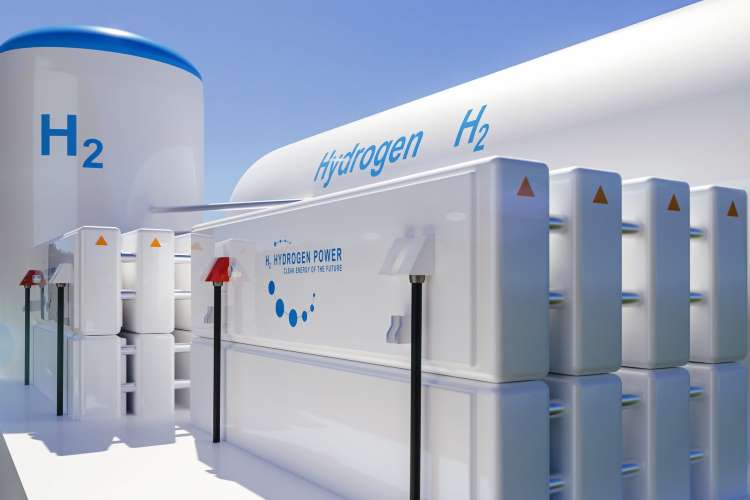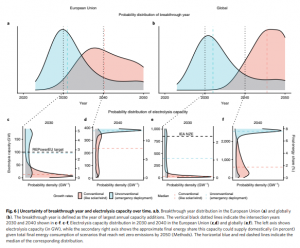
The 2020s could well be termed as the decade of hydrogen as we come across some announcement regarding a major hydrogen project or breakthrough every passing day, says an IMF blog written by Thijs Van De Graaf. The last few years saw at least 30 national governments taking policy initiatives towards a green hydrogen future. Currently several countries are at various stages of preparing a hydrogen strategy. Much of this emphasis on the clean fuel comes from wishful thinking as the world is nowhere near producing enough green hydrogen to meet the rising global demand for energy.
There world is witnessing a sense of urgency to build green hydrogen capacity due to various reasons ranging from climate change to strategic necessities. There is a rush among large institutional investors and corporates to invest in hydrogen as they do not want to miss a great growth opportunity. The Inflation Reduction Act in the US and the EU decision to increase its 2030 green hydrogen target will offer a major push to hydrogen capacity building. The rise in carbon fuel prices will force nations to invest in this alternative fuel.
Green hydrogen is produced by splitting water using renewable electricity. The world is betting big on this clean fuel for achieving carbon neutrality. It is expected to replace fossil fuels in energy intensive industries and long-distance transport which are the biggest emitters of greenhouse gases. The Russia-Ukraine war and the resultant disruptions led to heavy investments and more announcements in green hydrogen projects. Despite all the noise, the future of green hydrogen is still uncertain, says a recent study by Potsdam Institute for Climate Impact Research.
READ I Hype vs Reality: Green hydrogen capacity in 2030 may fall short

Supply lags in green hydrogen
Despite being seen as a credible alternative to carbon fuels, green hydrogen is unlikely to meet 1% of the global energy needs in 2035. The EU’s 2030 target to produce 10 million tonne hydrogen is not feasible without a major breakthrough in energy technology. However, such a breakthrough is unlikely till 2040 which means the future of the fuel is uncertain. The uncertainty in long-tern supply makes investment in clean hydrogen a risky proposition. Only emergency measures by national governments can ensure dramatic growth rates for the hydrogen industry.
The researchers at Potsdam Institute used computer simulation to study the feasibility of the required increase in electrolyser output. Such changes are possible only in wartime mobilisations, heavy public investments, market-fuelled deployment of IT innovations, says the study. The study finds that most of the earlier research studied the future of hydrogen from the point of view of the applications, markets, and industries. They did not explore the hurdles to the development of electrolysis technology which is in a nascent stage. The study says a major breakthrough in hydrogen is not possible in the absence of decisive policy measures.
READ I Indian economy: Has Amartya Sen lost the debate?
The biggest challenge is the production of electrolysers which is yet to achieve industry scale. The output of electrolysers must grow 6000-8000 times by mid-century to achieve carbon neutrality targets set by the Paris Agreement. It also needs a simultaneous 10 times rise in the output of renewable power at competitive rates. There is also a need for close coordination between producing and consuming nations. Most of the trade in hydrogen will happen on a bilateral basis. The nations need to agree on a definition of green hydrogen and monitoring compliance.
The advancements in knowledge about hydrogen as a fuel will lead to heavy investments in supply chains, resulting in exponential growth in electrolysis. This could end the uncertainties around supply and infrastructure, which may lead to a round of heavy investments. This could lead to favourable policies and rapid deployment of electrolysers to produce gigawatt-scale capacity addition. Such dramatic turn of events could lead to substantial innovation and scaling up of hydrogen production which is enough to meet increasing demand, says the study. This will lead to success in the global quest for net zero energy system.
The decision makers in corporates and governments must be aware of the risk of overestimating the potential of green hydrogen. Despite favourable developments, hydrogen supply will be too less to substitute fossil fuels in the foreseeable future. The focus of incentives should be on sectors where there is no other alternative energy source such as steel and cement industries. The hydrogen ambition should not prevent the development of other available clean options like electric cars. The world needs simultaneous development of all available zero-emission technologies.

